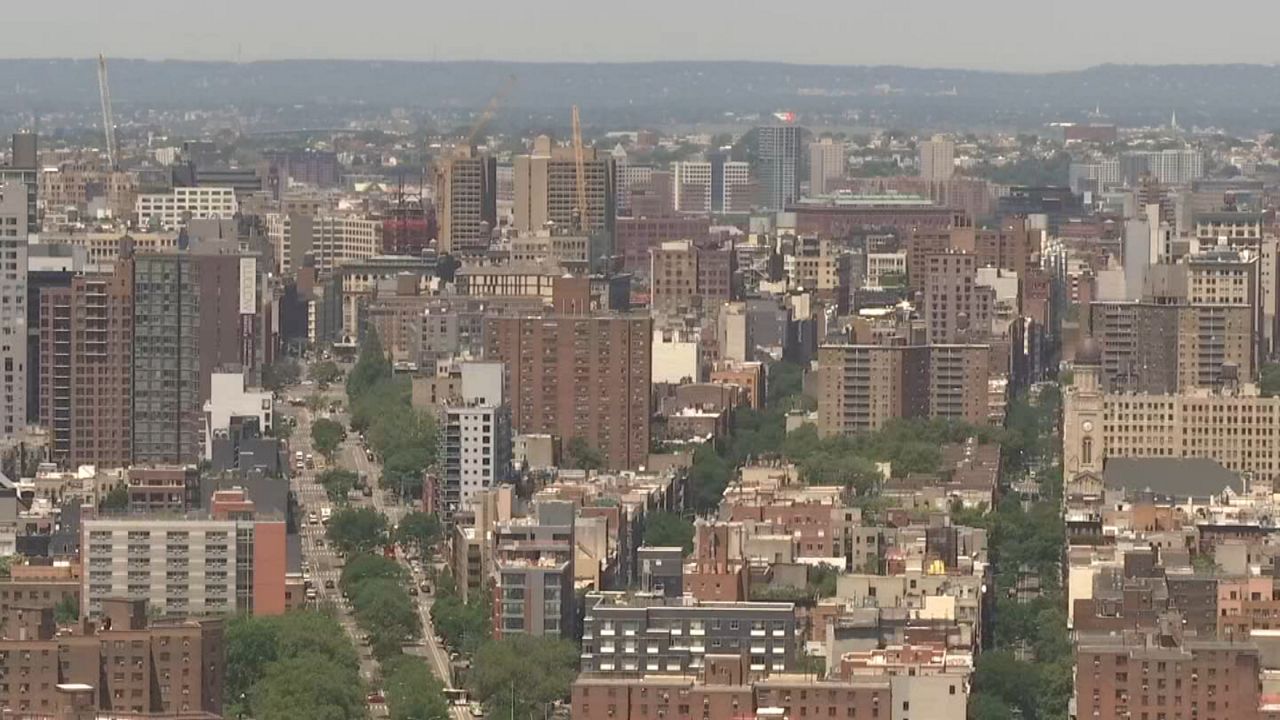Pamela Frazier’s apartment troubles started years ago with a noisy upstairs neighbor.
Then, last February, water began leaking into multiple rooms of her unit, in the New York City Housing Authority’s Jefferson Houses, in Harlem. Shortly after, black mold began growing in the corners of the walls.
Frazier, 67, who faces mobility challenges and recently had a knee replaced, requested and eventually received approval in March to transfer to a vacant apartment in a different NYCHA development. After nearly a year, however, NYCHA says the unit is still not ready for her.
Last month, the authority sent her a letter: Did she still want to move?
Yes, she replied. One of her bedrooms was “uninhabitable” from mold growth.
“I just want peace,” Frazier, 67, said in an interview. “They say your home is your sanctuary. I hate coming home, because I don't know what I'm coming home to.”
Thousands of other families are waiting in line alongside Frazier, as the authority’s number of vacant units has skyrocketed over the last year.
In January 2022, NYCHA had 486 units deemed vacant and available for move-in, according to data provided by the authority. This month, that number is 3,593 — a 640% increase. Nearly 1,000 other units have been taken off the list of apartments considered rentable because they need such significant repairs.
The vacancy crisis, according to NYCHA, tenant lawyers and city officials, is caused by a range of factors, from more stringent rules for clearing apartments of lead and asbestos abatement, to dwindling staff resources and inefficient management. The result, critics say, is that families, senior residents and people in homeless shelters wait sometimes for upwards of years to transfer to new homes.
“We’re paying for people to be in homeless shelters when they could actually be in a home,” said Councilwoman Alexa Avilés, chair of the body’s committee on public housing. “It has a tremendous human impact.”
In an emailed statement, Nekoro Gomes, a press representative for NYCHA, said the authority “works with partners at all levels of government to use every available resource to ensure that vacant apartments are safe for public housing residents and we are continually exploring ways to boost our capacity to address maintenance and abatement needs.”
Gomes added that the authority is currently working on Frazier’s apartment transfer request, and that staff were scheduled to visit her apartment Wednesday to determine the source of the leak. He did not offer a date for when Frazier will be able to move into a new unit.
NYCHA has faced a cascading series of changes and challenges in recent years, built on decades of underfunding from multiple levels of government and poor upkeep of its housing stock. It currently faces, by its own estimate, a more than $40 billion backlog in repairs, a figure that grows by $1 billion each year and which does not include billions more in expected costs to modernize and climate-proof the system.
Currently, the authority is facing a leadership change, as its longtime chairman, Greg Russ, plans to depart this year. It has also seen state legislation change the authority’s corporate structure in an effort to bring in more federal funding for apartment repairs.
Yet these issues remain separate from the factors driving apartment vacancies.
Typically, NYCHA sees about 3,400 households voluntarily leave their 162,000 total units each year, a number that increased only slightly last year, according to the authority. At the same time, its vacancy rate increased from 1.9% in January 2022 to 3.7% this past January.
Evictions are not responsible, according to NYCHA and tenant attorneys. The authority said that in all of 2022, only five eviction warrants were executed in its system.
Part of the issue, NYCHA officials said at a City Council hearing examining the vacancies earlier this month, is new abatement laws that went into effect in December 2021 that halved the allowable level of lead in apartments.
Now it takes the authority four months to simply determine whether there is lead present in an apartment, Eva Trimble, the authority’s chief operating officer, said at the hearing. It takes 55 days, on average, to determine if asbestos is present, she added.
At the same time, the authority said it has 137 unfilled positions in the skilled trades teams that ready apartments for new owners. (The authority has a total budgeted headcount of 12,212 positions; NYCHA did not provide the total number of skilled trades positions it is budgeted for.) On average, NYCHA residents stay in their units for 20 years, leading to significant repair needs.
Overall, the authority said, the vacant units have been open for a year, on average.
Avilés said that her hearing on the vacancies was prompted by regular visits to NYCHA developments in her area, and follow-ups with the authority that left her unsure whether it was aware of the extent of unfilled units in its own system.
“I’ll notice the doors, and I'll ask, ‘What’s up with that apartment?’ And someone will say, ‘Oh, that's been vacant for five years,’” Avilés said in an interview. “I can't say with confidence that NYCHA knows where all these units are, and that they have a clear inventory around their state and their needs.”
Even under business as usual, NYCHA residents often need assistance from housing advocates or attorneys to push their apartment transfer requests through the system, advocates said. Now, however, tenants are waiting years to move a growing family into a larger unit, or be placed in senior housing to address disabilities or increased care needs.
Even as the homeless shelter system is pushed to its breaking point as thousands of people seeking asylum arrive in the city, rising above a population of 70,000 this month, according to city reports, few of those families have been able to move into NYCHA units.
“The vacancy situation and the delays in apartment readiness are really impacting a lot of people,” said Lucy Newman, a staff attorney in the law reform unit of The Legal Aid Society. “There are people languishing in homeless shelters who can't get into public housing, which has always been one of the best, most affordable, stable options for a family coming out of chronic homelessness.”
It wasn’t until the council hearing that tenant advocates realized the vacancy issue was system-wide. Ross Joy, the director of housing and civil justice at the Red Hook Justice Center, said they first noticed the issue when residents requesting emergency transfers had their requests go unanswered for months or longer.
“We’ve just seen such a slowdown,” Joy said.
NYCHA’s issues with turning over apartments comes as the city faces several other housing challenges, with record-high rents and renewed eviction cases since a pandemic-era eviction moratorium ended last year.
“Housing is the number one issue in our city,” Avilés said. “If we can't figure out how to get 3,000 units, 5,000 units prepared and moved through the pipeline, we have even more issues than I thought.”
Frazier, meanwhile, is still waiting for any notice that she can move into her long-promised new apartment. She was recently told that maintenance workers will come in April to attempt to address the water leakage issues that cause ongoing growth of black mold.
“It’s a waiting game,” she said. “I just have to wait.”






 CC Bk Unlawful Evictions)
 Pkg IBO Housing Report CG)
